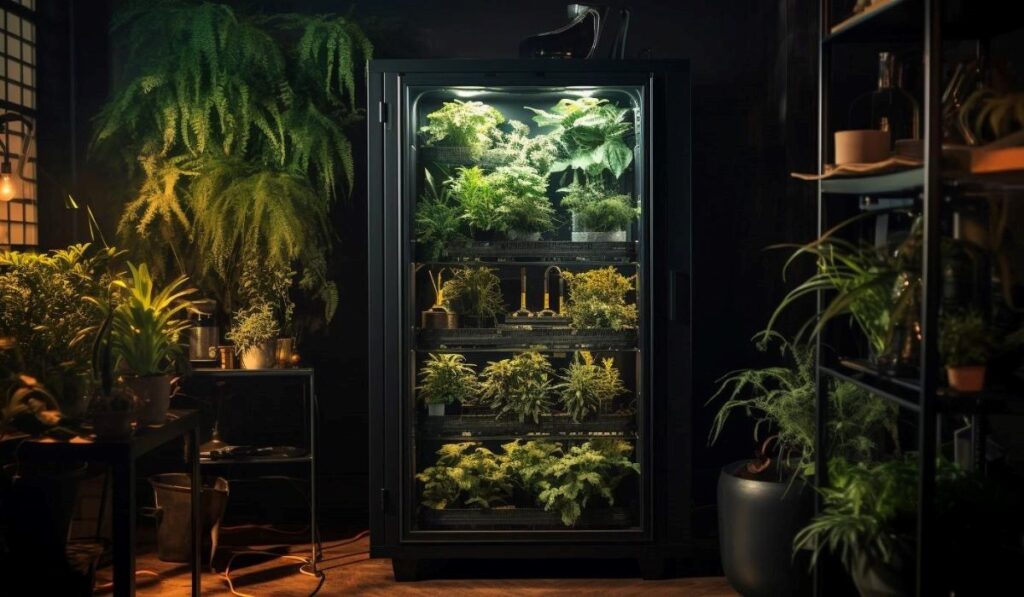A Growshop is a specialized retail outlet that provides everything necessary for indoor plant cultivation. This comprehensive guide aims to delve deeper into the specifics of indoor growing, covering essential aspects such as lighting, climate control, grow boxes and tents, substrates, and various cultivation methods.
Lighting Solutions for Indoor Cultivation: Indoor plant growth significantly depends on artificial lighting, as natural sunlight is often insufficient indoors. The focus is not on replicating the sun but on providing the optimal light spectrum for plant growth. The Photosynthetically Active Radiation (PAR) spectrum, ranging from 400-700nm, is crucial for plant health. LED grow lights (e.g., BloomStar, SANLight, Lumatek) are particularly efficient in covering this spectrum. While fluorescent tubes and High-Intensity Discharge (HID) lights like Metal Halides (MH) and High-Pressure Sodium (HPS) also cover this range, they are less energy-efficient compared to LEDs.
Climate Control in Indoor Growing: Managing the indoor climate is vital, especially when using HID lights, which generate significant heat. Ventilation systems are essential to remove excess heat and supply fresh air (rich in CO2) to the plants. Different lighting setups require corresponding ventilation solutions, possibly with carbon filters for odor control. In winter, the heat from HID lights can be beneficial, but in summer, it may necessitate additional cooling measures.
Grow Boxes and Tents: Grow boxes and tents allow for precise control over the growing environment, including light cycles and air exchange. These structures are designed to be almost completely light and air-tight, with ventilation systems often including climate control and carbon filters to eliminate odors and filter incoming air.
Substrates and Growing Methods: Hydroponics, a method involving no traditional soil, is increasingly popular. Plants are nourished with water and nutrients, often using inert media like clay pebbles for support. Soil remains a classic choice, forgiving to beginners and available in various formulations, including organic and mineral-enriched options. Coco coir, made from coconut husks, is a sustainable alternative, offering a unique balance of water retention and aeration.
Pot Selection for Indoor Cultivation: Choosing the right pots is crucial for healthy root development. While traditional plastic pots are common, innovative options like air pots and fabric pots offer better air pruning and moisture management, promoting healthier root systems and, consequently, healthier plants.
Watering Techniques: Watering can be manual or semi-automatic using drip systems. The key is to maintain a balance, ensuring the plants are neither overwatered nor under-watered. In hydroponic systems, nutrient solution management is critical, with regular monitoring and adjustments of pH and nutrient levels.
In the following sections, we delve deeper into each of these aspects, providing detailed insights and practical tips for successful indoor plant cultivation. Whether you’re a beginner or an experienced grower, understanding these fundamentals is key to achieving a thriving indoor garden.
Remember, while this guide offers a solid foundation, there’s always more to learn in the dynamic field of indoor cultivation. Personal preferences, specific growing conditions, and plant types all play a role in shaping your unique growing experience. For tailored advice and a more in-depth exploration of these topics, visiting a Growshop or consulting with cultivation experts is highly recommended.

